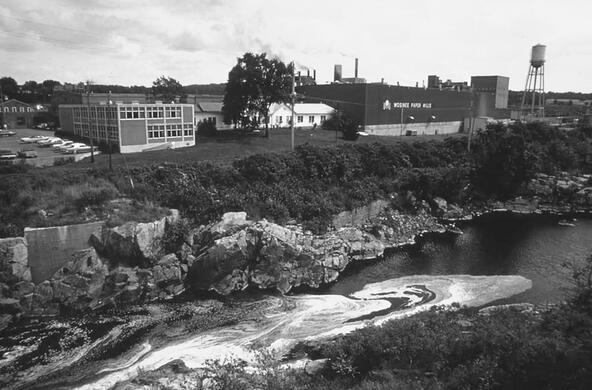In early spring, shortly after the snow melts, vernal pools dot the landscape. Isolated from larger water bodies, these small wetlands are usually wet for only a few months out of the year. If you are not paying attention, you just might miss them. And that would be a shame because these oft-overlooked wetlands are valuable and interesting ecosystems.
Certain frogs and salamanders rely on vernal pools for breeding. Amphibians begin life as aquatic animals; their egg masses must be placed in freshwater. Because vernal pools dry up, they don’t support fish - making them ideal nursery grounds. Visit a vernal pool on a warm spring evening and wonders abound, from the chorus of wood frogs to salamander courtship dances. Soon, mating gives way to egg masses, tadpoles, and larval salamanders.
In addition to serving as wildlife habitat, vernal pools perform important ecosystem services. By capturing rainwater and snowmelt, they recharge groundwater and subsurface aquifers, replenishing wells and drinking water resources. They also play a role in filtering and retaining floodwaters and cycling nutrients.
Despite their myriad of uses, vernal pools are often unprotected by state and federal regulations, leaving them vulnerable to development. In New York State, only wetlands in excess of 12.4 acres are regulated by the Department of Environmental Conservation.
“Throughout the Hudson Valley, vernal pools and other small wetlands are disappearing, largely as a result of development,” comments Dr. Michael W. Klemens, a research conservationist at Cary Institute and the director of its Metropolitan Conservation Alliance. “Ecologically and economically, we need to identify and conserve high-quality vernal pool habitats; time is of the essence.” To help guide environmentally compatible development, Klemens is leading a survey of vernal pools in the Town of Washington, New York. His goal is to help decision makers distinguish between high-quality habitats and those less likely to support a diversity of amphibians. A ranking system will also inform site-appropriate conservation strategies.
This spring, under Klemens’ direction, citizen scientists inventoried over 100 vernal pools. Attention was paid to amphibians that require the pools for breeding: Jefferson, marbled, and spotted salamanders as well as wood frogs. Assessments are currently being made of the landscape surrounding surveyed pools, including the amount of undeveloped upland habitat and the presence of roadways.
“Vernal pools are shaped by the health of the land that surrounds them,” Klemens comments. “High-quality pools need intact upland habitat that extends at least 750 feet from the water’s edge. Pools in this category need special protection, for the sake of wildlife, water resources, flood abatement, and the character of the Hudson Valley.”
The final results of the survey are expected in the fall. Roger Akeley, Commissioner of Dutchess County’s Department of Planning and Development, noted, “A vernal pool assessment will help guide land use decision making in the Town of Washington so that development can be designed to keep these special wetland habitats intact.”
The Town of Washington is currently considering adoption of a “home rule” wetland ordinance that would extend regulatory protection to vernal pools and other small wetlands.





